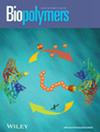Lipid Nanocarriers of Naringin Dispersed Gel for Topical Application: Development, In Vitro, Ex Vivo, and In Vivo Kinetics Evaluations
Abstract
Nanostructured lipid carriers (NLCs) have emerged as promising systems for topical drug delivery due to their enhanced stability and high entrapment efficiency for lipophilic compounds. This study aimed to improve the topical skin permeation of poorly water-soluble Naringin (Nrg) for the treatment of diabetes mellitus (DM) using an NLC-based gel. Nrg-loaded NLCs were prepared via a microemulsion technique followed by homogenization and optimized using a Box–Behnken design. The optimized Nrg-loaded NLCs exhibited a particle size of 212.1 ± 1.8 nm, zeta potential of −23.6 ± 2.8 mV, and entrapment efficiency of 77.47% ± 4.3%. Further, XRD, DSC, and TEM analyses confirmed the crystalline state and nanoscale structure. In vitro release studies revealed a biphasic sustained release profile. The optimized Nrg-NLCs were incorporated into a Carbopol 940 (Cp) gel, which showed 2.36-fold higher skin permeation compared with plain Nrg-Cp gel. In vivo pharmacokinetic studies demonstrated a 1.56-fold increase in bioavailability versus oral Nrg suspension. No skin irritation was observed in animal models. These findings suggest that Nrg-NLC-Cp gel offers a non-invasive and effective alternative for topical delivery of Nrg with improved permeation and systemic availability that can potentially enhance therapeutic outcomes and patient compliance in DM management.


 求助内容:
求助内容: 应助结果提醒方式:
应助结果提醒方式:


